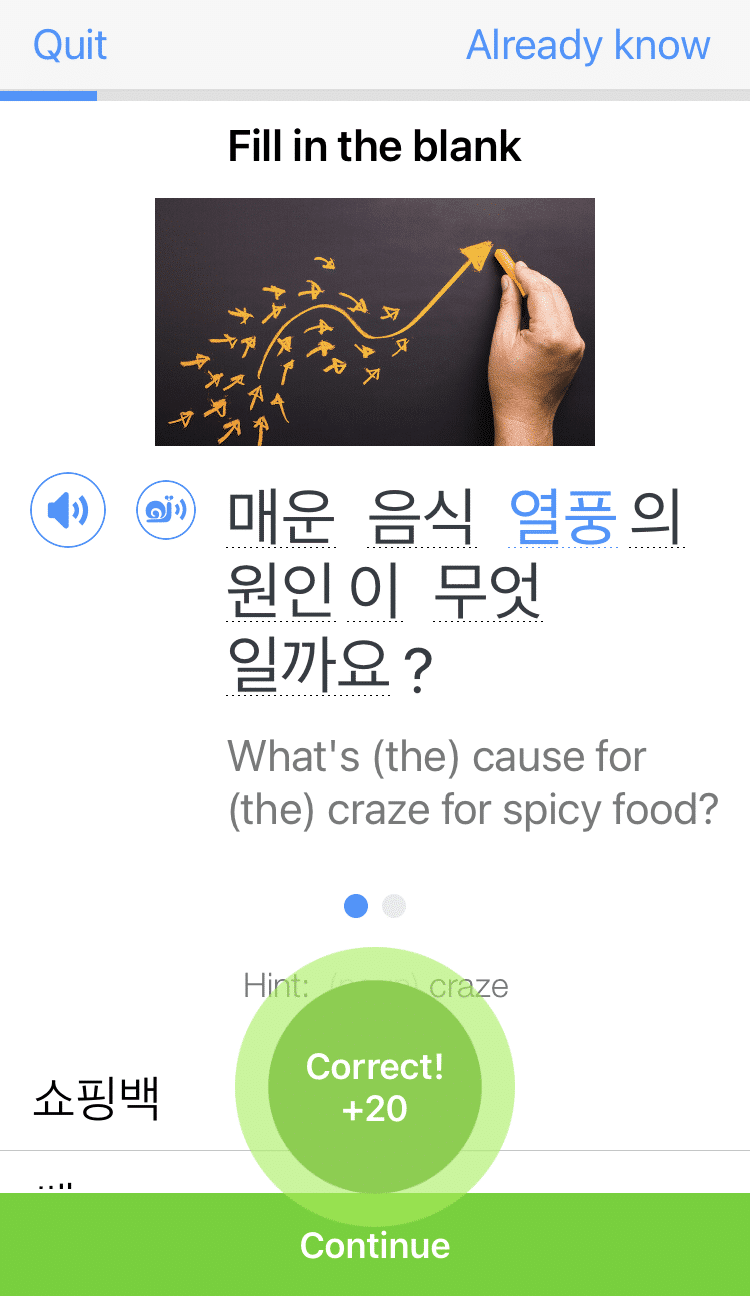What’s My Name in Korean? How to Choose One That Suits You

Has studying the Korean language and culture become a part of your daily life? Well, why not celebrate the fact by “Korean-izing” another everyday aspect, such as your own name.
Figuring out your Korean name, or 이름 (ee-reum), is a fun adventure that can be done at any point in your studies.
Here’s a guide that outlines how to find the best Korean name for you.
Download: This blog post is available as a convenient and portable PDF that you can take anywhere. Click here to get a copy. (Download)
What Is My Name in Korean?
If you’re a Korean language learner or a visitor to Korea, there’s actually no need to think up a Korean name for yourself.
In fact, you can choose to keep your name as is, and then let it be re-written with Korean Hangul characters that create an accurate enough pronunciation.
There are plenty of folks living in Korea who go by non-Korean names. Actually, it’s common for Korean business people to adopt a more Western name, to make it easier for European or American partners to address them.
If your name proves to be a bit of a mouthful for Korean natives to say, then you can opt for a shortened version or a nickname.
How to Write My Name in Korean
Step 1: Separate your name into distinct syllables
A syllable is a vocal “beat.” It’s a measurement of pronunciation based on vowel sounds.
So, the name “Tyler” would be two syllables, while the name “Bartholomew” would be four syllables.
Most Korean given names are two syllables long, giving them a lovely sense of brevity and rhythm. Together with the family name, a complete Korean name is usually three syllables long.
If your name consists of more syllables and you’d like to more closely match the typical Korean naming pattern, you could try to shorten your name to a two-syllable nickname (e.g. “Jonathan” to “Johnny” or “Annabel” to “Anna”).
Easy enough, right? Let’s jump into the more challenging part!
Step 2: Transform each syllable to the closest Korean Hangul equivalent
For this step, you have to be relatively skilled in proper Korean pronunciation.
Base your Hangul choices on the pronunciation of your name’s syllables, not on the spelling. You can more or less ignore how your name is written in Latin letters, since they don’t always represent the correct sounds.
For example, the name “Leonard” is pronounced leh-nurd, not lee-oh-nard. You would thus find the Hangul equivalent for the leh sound, such as 레.
Pay careful attention to the vowel a, because English pronunciations of it don’t always line up with Korean vowel choices. For example, you may naturally pronounce Amelia as uh-mee-lee-uh, but in Korean, you’d switch uh (어) sounds to ah (아) sounds.
Also note that some English sounds and letters don’t have exact equivalents in Korean. Therefore, some pronunciation “substitution” occurs:
- F becomes Korean ᄑ (puh sound)
- V becomes Korean ᄇ (buh sound)
- Z becomes Korean ᄌ (juh sound)
- TH can become Korean ᄊ or ᄉ (ss or s sounds)
- R or L both become Korean ᄅ
Step 3: Account for “extra” syllables that may pop up
“Extra syllables?” you wonder. “But haven’t I already figured out the correct number of syllables?”
Well, when transliterating your name into Korean, you may run into a certain issue: what you deduced was a single syllable can’t really be captured with just one Hangul syllable.
For example, the name “Christopher” is, in English, three syllables long. However, in Korean, it would be five syllables long, separated as 크리스토퍼, keu-ri-seu-to-puh.
Depending on your name, you may never encounter this situation. But to make sure, read your transliterated name aloud. If a certain syllable feels a bit “squashed” or awkward to say, that may be your cue to dissect it further.
Don’t worry if the Korean transliteration of your name feels long. That’s often the case, and as mentioned in the first step, you can always default to a shorter nickname.
Also, try to simplify your Hangul syllable choices. Start first with two-letter Hangul syllables and see if they work adequately before you resort to more complicated three- or four-letter Hangul syllables.
Step 4: Figure out a meaning for your name (optional)
You can certainly stop with just a syllable-by-syllable transliteration of your name. However, you can also explore further and see if your name can end up meaning something in Korean!
For example, the name “Hannah” could be transliterated to 하나 (ha-na). If you know your Korean numbers, then you know 하나 means “one”! Another example could be the name “Murray” (pronounced mur-ee) transliterated to 머리 (muh-ri), which means “head.”
It’s a fun way to work on your Korean just a bit more. It’s also a good way to see if your name could end up sounding like a word you’d rather not be associated with.
By the way, the majority of Korean given names are written with and derive meanings from Chinese characters, known as 한자 (han-ja). It harks back to the times when the nation’s first written language was Chinese, before the indigenous writing system consisting of Hangul characters was created.
A single Hanja character can have multiple meanings. Let’s see how this works with one male name: 대성 (dae-sung). 대’s Hanja character can be 大, which can mean “great.” 성’s Hanja can be 城 (city or temple) or 成 (to succeed). So, depending on your choice of Hanja, 대성 can mean something like “great city” or “great and successful.”
If your name ends up sounding quite like a natural Korean name, you could craft its Hanja equivalent. This can be a challenging but fun endeavor that gets you a step closer to a more authentically Korean name!
How to Choose a Korean Name
The etiquette of gaining a Korean name
There are plenty of valid reasons to get an au natural Korean name. You can choose to do so because:
- You feel a very strong connection to the language and culture
- You plan to run a business in Korea
- You plan to live in Korea for a long time, and your non-Korean name is hard to pronounce
- Your family consists of Korean members
Overall, getting a Korean name is appropriate to express your sincere desire to be a part of Korean culture. It’s a welcome decision that can certainly impress Korean native speakers!
Ways to pick your own Korean name
Check out lists of the most trendy Korean names
Love chasing trends? Then don’t waste time and do check out some lists of the most popular Korean names. They’re easily available on dedicated websites such as forebears.io or names.org.
Top choices tend to remain high on the lists for years, so rest assured that they won’t go out of fashion anytime soon. If you want to be a bit more unique, you can try to switch out the second syllable of the name with another.
Examples of Popular Male Korean Names:
Examples of Popular Female Korean Names:
Pick out Korean names that sound like English ones
There are a number of Korean names that are phonetically similar to existing English ones. You might favor these kinds of names because they feel more familiar and easy to say.
Examples include:
- 리아 (ri-ah) – sounds like Lia
- 미나 (mi-na) – sounds like Mina
- 선희 (sun-hee) – sounds like Sunny
- 시현 (shi-hyun) – sounds like Shaun
- 유진 (yoo-jin) – sounds like Eugene (note that it’s a Korean female name)
- 에리 (eh-ri) – sounds like Ellie
- 지나 (ji-na) – sounds like Gina
- 재선 (jeh-sun) – sounds like Jason
- 재인 (jeh-in) – sounds like Jane
- 하나 (ha-na) – sounds like Hannah
This tip applies especially for female names. As in many languages around the world, plenty of Korean female names end in an ah or ee sound.
Let a name generator do the work for you
Because why not? Name-crafting can be draining business, and you just might not have the time for it!
Online name generators, such as this one, can give you one or more random options with just a single click. They can be a great choice if you’ve no idea how to find the right name and want to explore your choices.
I recommend that you look up the meanings of any generated names that you like, to see if they really suit you.
Base your name on native Korean words
While the majority of Korean names are based on Hanja, in modern times, many folks choose names that are native Korean nouns, verbs or adjectives. These names are known as 고유어 이름 (go-yoo-uh ee-reum).
Not only does this help you avoid juggling Hanja, but it also provides many options, many of which are comfortably unisex. You can choose a word with a meaning that resonates with you.
Keep in mind that this method can easily lead to some very “out there” names. If you don’t mind the possible attention and curious reactions, then awesome!
- 가을 (ga-eum) – fall
- 달 (dal) – moon
- 마음 (ma-eum) – mind
- 믿음 (mi-deum) – faith
- 사랑 (sa-rang) – love
- 평화 (pyung-hwa) – peace
- 아름 (ah-reum) – beautiful
- 영 (yung) – spirit
- 하루 (ha-ru) – day
- 한결 (han-gyul) – unchanging, unity
- 한을 (han-eul) – sky
Ask a Korean pal to help you out
Having a Korean person around isn’t just a great boon to your language studies. They can help you nail down a name that not only sounds natural, but also suits you well.
You can approach your Korean buddy with a list of names and see what they think. They can reliably help you trim down your options to the best-sounding ones. Alternatively, they can help you get started on the naming process and provide a list of choices you can mull over.
Getting a Korean name is a fantastic way to express your passion for the language and culture.
You can learn even more about Korean by watching authentic videos on FluentU.
FluentU takes authentic videos—like music videos, movie trailers, news and inspiring talks—and turns them into personalized language learning lessons.
You can try FluentU for free for 2 weeks. Check out the website or download the iOS app or Android app.
P.S. Click here to take advantage of our current sale! (Expires at the end of this month.)
So don’t wait! Have fun and start exploring what Korean folks can call you!
Download: This blog post is available as a convenient and portable PDF that you can take anywhere. Click here to get a copy. (Download)
And One More Thing...
If you're like me, you enjoy learning Korean with engaging material and will love FluentU.
Other language-learning apps and programs use scripted content. FluentU lets you consume the same content as native Korean speakers, but with tools to make it easier to pick up the language while you watch. You’ll learn Korean as it’s actually spoken by real people.
You can bring FluentU's learning tools directly to YouTube or Netflix with our Chrome Extension, or check out our curated video library full of clips that cover a wide range of topics, organized by level and type of content.
As you watch a video, interactive subtitles let you tap on any word to instantly see its meaning, an image, and its audio pronunciation. Click on the word for additional examples and to add it to your flaschards.
To reinforce what you've learned, you'll complete engaging exercises and see more examples of key words from the video. You'll even get extra practice with difficult words so they really stick in your memory–especially helpul for people like me who struggle with remembering new vocab!
FluentU keeps track of what you're learning, and tells you exactly when it's time for review, giving you a 100% personalized experience.
Start using the FluentU website on your computer or tablet or, better yet, download the FluentU app from the iTunes or Google Play store. Click here to take advantage of our current sale! (Expires at the end of this month.)











